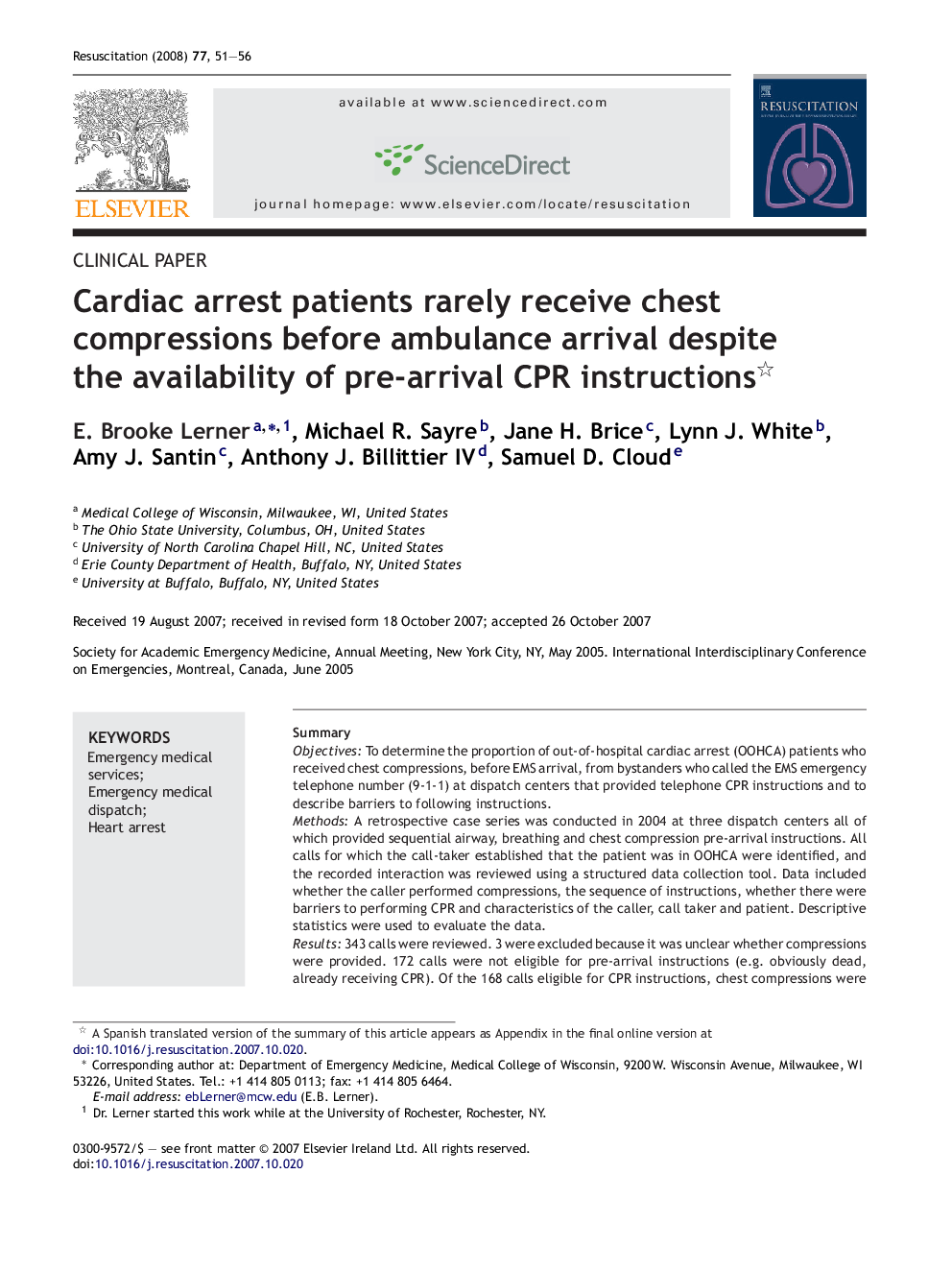| کد مقاله | کد نشریه | سال انتشار | مقاله انگلیسی | نسخه تمام متن |
|---|---|---|---|---|
| 3010734 | 1181528 | 2008 | 6 صفحه PDF | دانلود رایگان |

SummaryObjectivesTo determine the proportion of out-of-hospital cardiac arrest (OOHCA) patients who received chest compressions, before EMS arrival, from bystanders who called the EMS emergency telephone number (9-1-1) at dispatch centers that provided telephone CPR instructions and to describe barriers to following instructions.MethodsA retrospective case series was conducted in 2004 at three dispatch centers all of which provided sequential airway, breathing and chest compression pre-arrival instructions. All calls for which the call-taker established that the patient was in OOHCA were identified, and the recorded interaction was reviewed using a structured data collection tool. Data included whether the caller performed compressions, the sequence of instructions, whether there were barriers to performing CPR and characteristics of the caller, call taker and patient. Descriptive statistics were used to evaluate the data.Results343 calls were reviewed. 3 were excluded because it was unclear whether compressions were provided. 172 calls were not eligible for pre-arrival instructions (e.g. obviously dead, already receiving CPR). Of the 168 calls eligible for CPR instructions, chest compressions were actually given to 25 patients (15%, 95% confidence interval 10–21%) before EMS arrival. Leading reasons for not following CPR instructions included: caller disconnected phone before directions were complete (19%), caller's refusal (18%), emotional state of the caller (14%), inability to listen to telephone instructions and care for patient at the same time (13%) and physical limitations of the caller (8%). Failure to complete airway and breathing steps prevented 8% of callers from providing compressions.ConclusionsFew 9-1-1 callers provided chest compressions following telephone CPR instructions that included airway and breathing steps. The majority of callers were unwilling or emotionally or physically unable to follow the instructions.
Journal: Resuscitation - Volume 77, Issue 1, April 2008, Pages 51–56